Spirea "Shirobana": description, planting and care
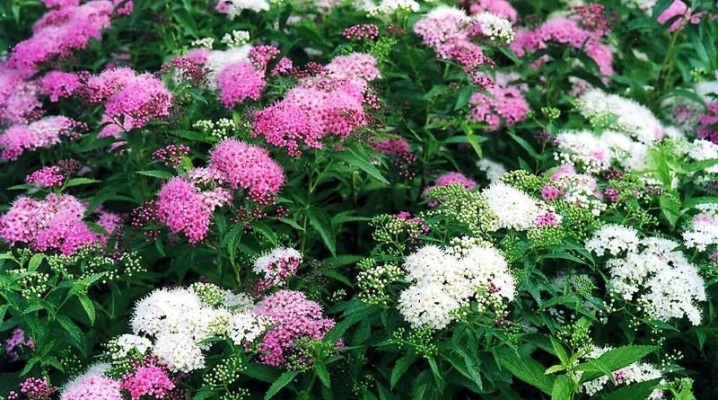
An ornamental shrub called "Shirobana" spirea is becoming more and more popular with gardeners. This plant is widely used for landscape design. Among the advantages of this type of spirea, endurance, low cost and attractive appearance should be highlighted. Another advantage of the plant is that it tolerates well even low temperatures.
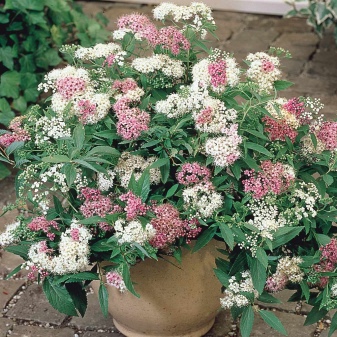
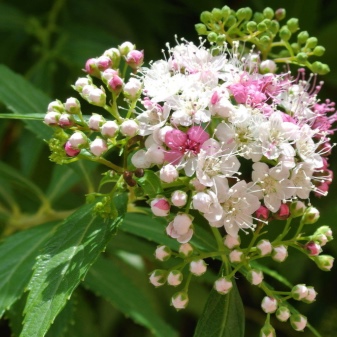
Description
Spirea "Shirobana" is a member of the Rosaceae family. This plant is distinguished by many varieties, among which "Genpei" stands out. Spirea is a shrub up to 0.8 meters high. Flowering occurs during the summer months. The crown is dense, has a rounded shape, and can reach 1-1.2 meters in diameter.
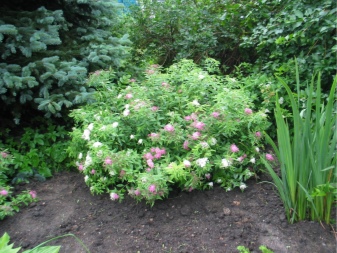
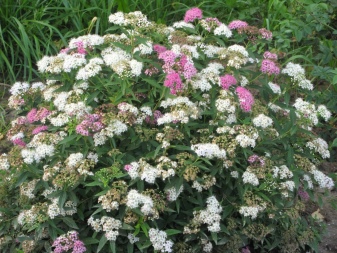
The shoots of the Shirobana plant are brown and covered with felt down. Their length is on average 2 cm. Leaves cover the branches densely. The shape of the leaves is narrow, reminiscent of an oval. Above, the foliage is dark green in color, and below it is covered with a bluish tint.
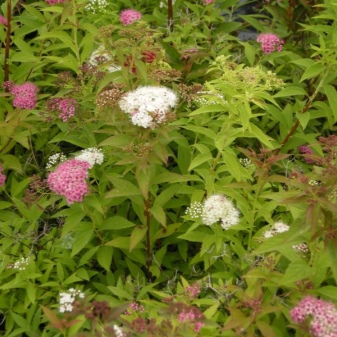
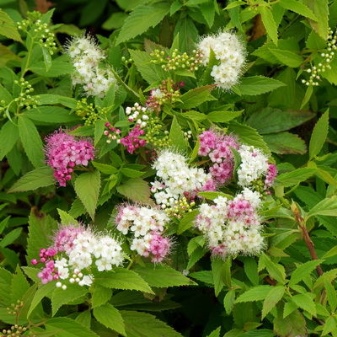
The Japanese spirea Genpei is amazing in that it blooms with pink, white and red flowers on one bush. There are both three-color and two-color colors of flowers. The flowering period lasts until autumn.
You can extend the most beautiful spirea time by removing the inflorescences that have withered.

The plant likes the sun and light soil. Although it can take root in any soil, the composition will still be reflected in the size of the bush and flowering. Spirea tolerates even severe frosts and summer heat well. It can adapt to almost any climate. Of course, in the Far North or in Africa "Shirobanu" is not found.
This variety, like other varieties of spirea, is an excellent honey plant, which allows you to place hives next to it. Also, do not forget about the active biological substances secreted by bushes and have a beneficial effect on the air.
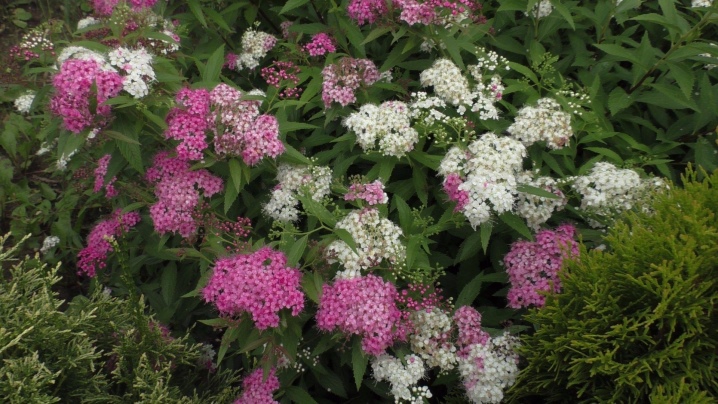
How to plant?
If, when planting this plant, some subtleties are observed, then the shrubs will turn out to be especially lush and beautiful. Moreover, abundant flowering will be observed every year.
Timing
Of course, like most plants, spiraea can be planted in the spring. However, experienced gardeners believe that it is best to plant shrubs in the fall (in the first weeks of September).
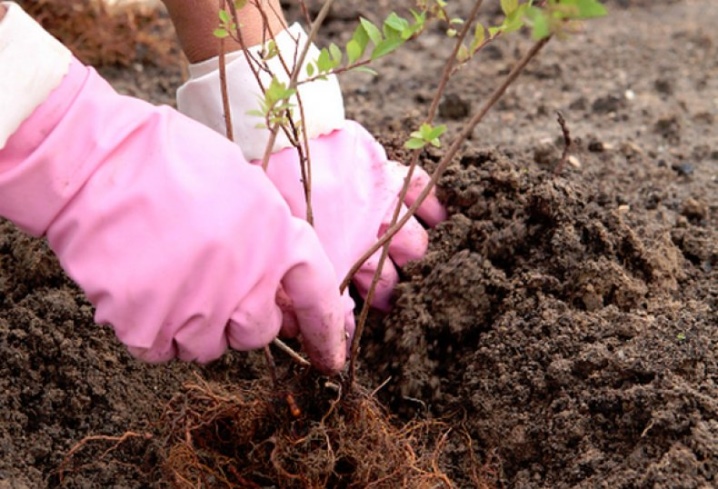
It is during this period that the most suitable weather is most often: cloudy and a little rainy.
Seat selection
For bushes, it is recommended to choose areas exposed to sunlight. Although "Shirobana" grows well in the middle shade. There are no strong preferences on the ground. However, to obtain more beautiful colors, it is worth choosing a loose and light soil. It is worth noting that the more nutritious the soil, the larger the shrub will be.
Soil preparation
When preparing a site for planting, you first need to dig up the soil and add organic fertilizers to it. There is no need to specially prepare the planting material. Then you should inspect the seedlings and choose the strongest and healthiest of them, without damage, especially on the roots. If the root system is overdried, then you can lower the plant in a container of water for several hours.
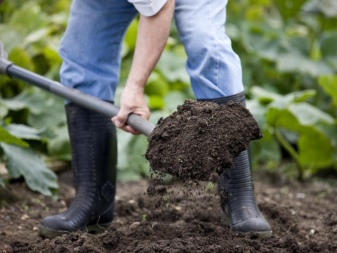
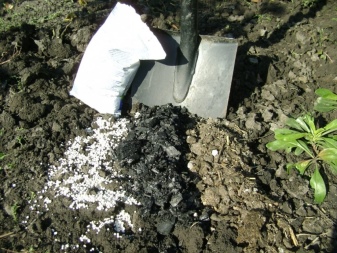
Spirea is planted in pits. Their diameter should slightly exceed the area of the root system of the seedling. As for the depth of the pit, it should be about 0.5 meters. The bottom of the recess should be lined with pebbles, gravel, broken brick or clay shards.Sand, peat and garden soil are poured onto the resulting drainage layer, which are taken in equal proportions.
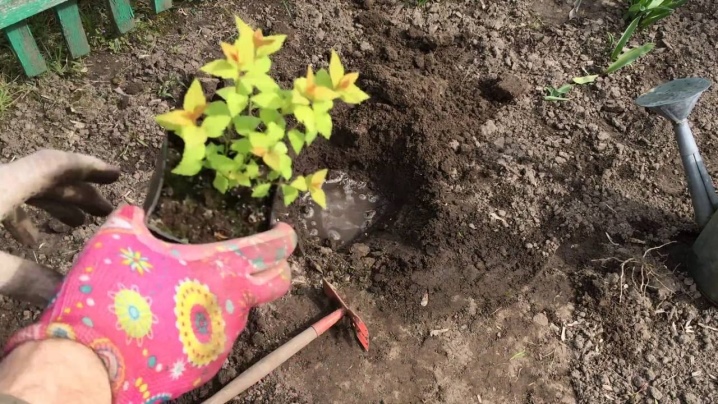
Experienced gardeners advise to include a complex mineral fertilizer in the soil mixture. 1 tablespoon is enough for one plant. This will provide the bush with food for several years.
Landing scheme
When the holes are completely ready, seedlings are lowered into them. In this case, it is important to distribute the root system evenly over the area of the pit. It is necessary to fill it with soil so that the root collar is on the surface of the soil or slightly higher. Upon completion, the planted seedlings are watered and sprinkled with mulch. This is necessary so that as much moisture as possible remains in the trunk circle. In the form of mulch, you can use peat, as well as walnut shells.
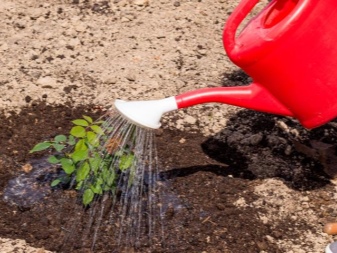
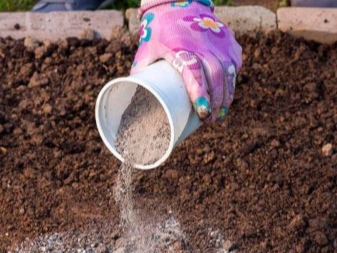
When planting, it is important to remember that the root growth of the plant is quite large and needs a significant area.
When more than one bush is planted, then you need to leave at least 50 centimeters between it and the neighboring ones. It is necessary to maintain a distance of 70 centimeters between the rows.
Care features
The unpretentious Shirobana does not need special conditions. A minimum of care, and she will delight all summer with lush multi-colored flowers. There is practically no need to prepare adult plants for winter. Young seedlings, which are not yet so strong, will need special care. It is recommended to cover them with a good layer of dry leaves.
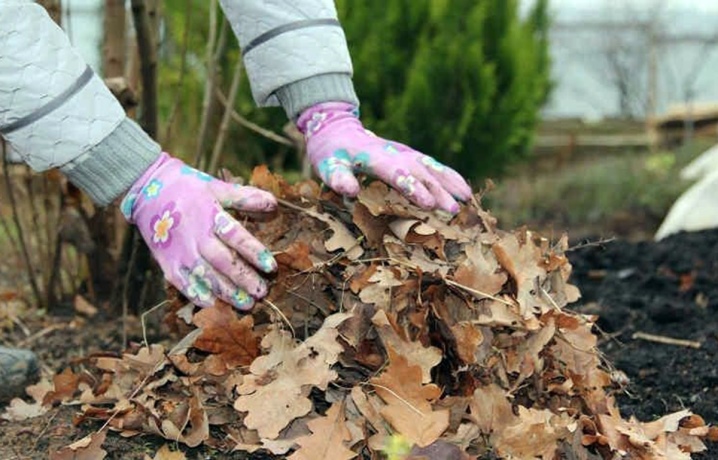
In areas where snowless winters are observed, the tree trunk circles should also be sprinkled with dry leaves or mulch. Such measures will not harm the plant and will allow better wintering in harsh conditions.
Watering
The root system of the plant is located quite close to the soil surface, so it is important to water it on time. If there is not enough moisture, then the bushes will grow slower and flowering will be weak. However, over-watering will harm the plant.
The best option for a hot summer is to water the shrub a couple of times a month. One young plant consumes about 10-15 liters of water. Of course, if you can see that the ground is very dry, then you can water more often. Watering is also necessary after flowering and pruning. During this time, you can increase the amount of water per plant. It is worth noting that the young spirea should be watered more often than the old one.
After watering and raining, it is important to loosen the soil under the bushes to avoid over-compaction.
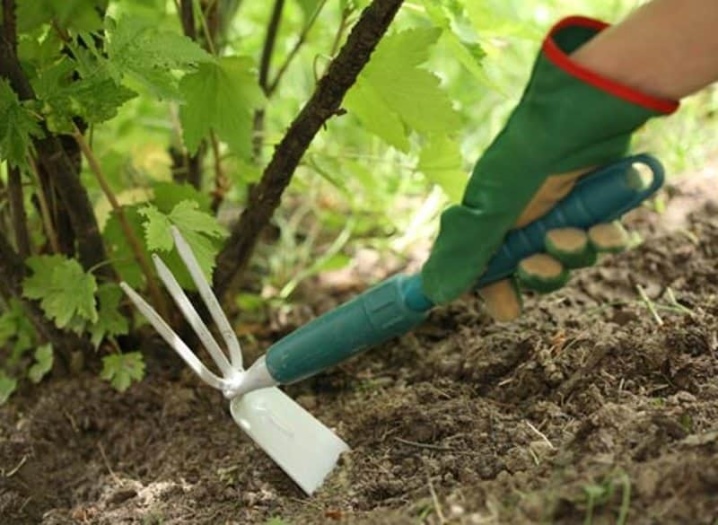
At the end of the procedure, you can mulch the soil under the bushes with peat, compost or walnut husks. It is also very important to remove weeds regularly.
Top dressing
Top dressing of shrubs is often carried out in the spring. It is best to apply complex fertilizers, according to the instructions attached to them. For young seedlings, you can introduce additional feeding in the summer. A mixture of mullein, water and superphosphate is suitable as a fertilizer. It is advisable to apply top dressing in the first summer month.
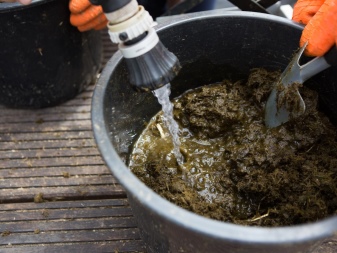
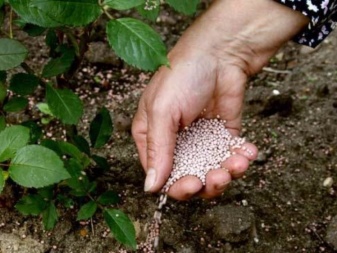
Pruning
Pruning is another mandatory step in spirea care. To maintain the beautiful appearance of the shrub, it is advisable to prune every spring. It is worth emphasizing that all varieties, including Genpei, tolerate haircuts well. Shrubs can be shaped at your discretion. The main thing is that the pruning is done on time so as not to spoil the flowering.
Of course, first of all, it is necessary to cut off adult plants, which are large in size... In addition to beauty, the spring haircut of spirea also has a sanitary function. In this case, it is desirable to have time to carry out pruning before the first leaves appear. As for the shoots, they must be before bud break. In this case, you should not feel sorry for the weakened or already completely dead branches, it is better to completely remove them.
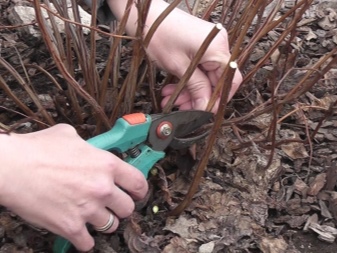
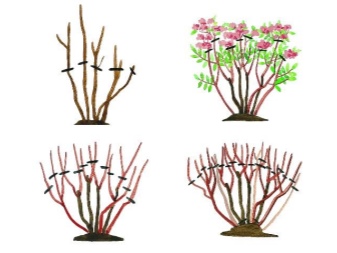
Do not be afraid to cut too many branches, as this will not harm the bush. It should be understood that the more old ones are removed, the better the new shoots will go.
As a result, the plant will rejuvenate, become stronger and more attractive.It should be remembered that pruning in order to rejuvenate shrubs must be carried out every four years from the moment they are planted. Cardinal removal is recommended so that shoots up to 30 cm long remain.
Sometimes, after such a procedure, the spirea recovers poorly, weakens, blooms a little. In this case, it must be replaced with a new bush. This happens especially often if the haircut was done at the wrong time.
Correct pruning allows you to give the bushes a neat shape, most often round.
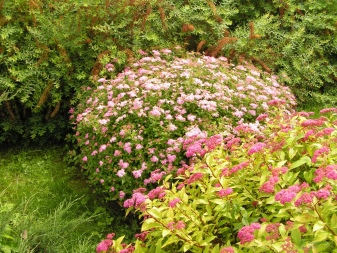
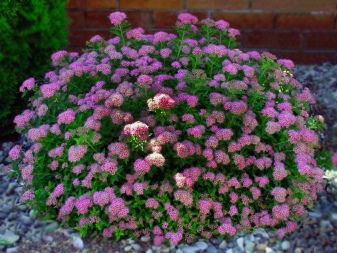
If we neglect haircuts altogether, then the old shoots, which are distinguished by a large weight, will begin to bend over to the ground. As a result, the plant loses its beautiful appearance. It is important to water after pruning and then feed the plant with mineral or organic fertilizers. You can also use a mixture of them.
Reproduction methods
Genpei can be propagated by various methods, among which gardeners can choose the most convenient for themselves.
Layers
Layers for propagation of shrubs are used most often. This method consists in tilting the strong branch as close to the soil as possible. It is important that it does not break in the process. The end of the branch must be buried in the ground. In this position, the branch is fixed with a bracket or simply with a heavy object.
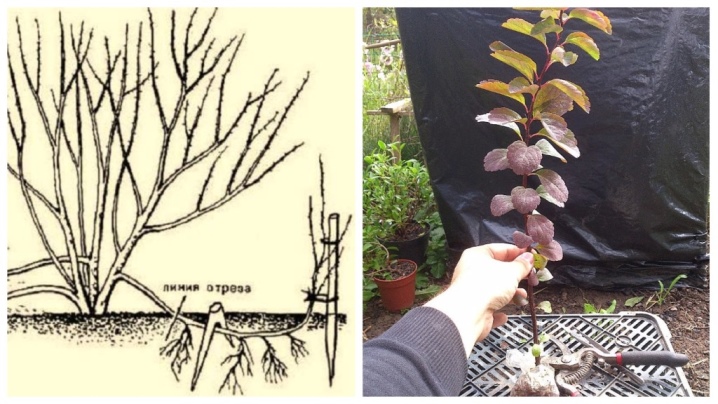
After the layer has a full-fledged root system, it can be separated from the main bush and transplanted to a permanent place. It is best to do layering in the fall in order to transplant the next year.
Cuttings
Cuttings are also great for breeding. With this method, the planting material takes root well, even if you do not use growth stimulants. First you need to take a good look at the bush and choose a shoot on it at the age of no more than a year. It must be cut almost to the very root. The branch will need to be divided into several parts so that each has no more than 6 sheets.
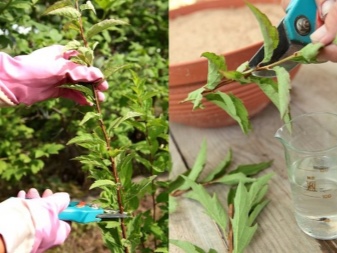
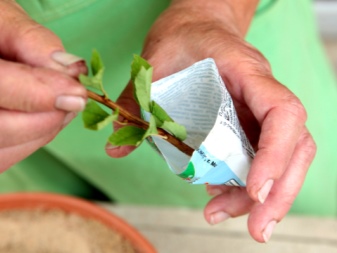
The length of the stalk should be about 15 cm. From the bottom of it you need to remove the foliage, and the remaining leaves should be cut off by 50%. Then the cuttings are treated for 3-6 hours with the preparation "Epin", which is diluted at the rate of 1 ml per 2 liters of water. After processing, a growth stimulator, for example, "Kornevin", is applied to the lower sections of the cuttings.
Now you can plant cuttings in containers that are filled with light soil with sand. The deepening is carried out at an angle of 45 degrees. The containers must be covered with foil or jars and put in the shade. Seedlings must be sprayed several times a day. At the first drops in temperature, containers with cuttings are dropped into the soil and a significant layer of dry foliage is poured on top. With the arrival of warm days, cuttings are dug up and planted in open ground.
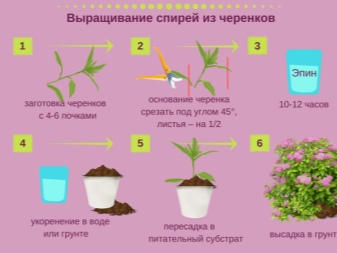
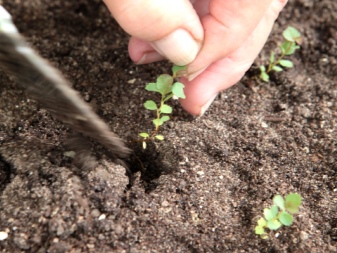
By dividing the bush
Among the vegetative methods, it is worth mentioning the division of the spirea. This method is suitable for both autumn and the first weeks of spring. This reproduction contributes to the rapid growth of the bushes. Among the shortcomings, it is worth noting the possible damage to the roots during division and the risk of infection. To avoid this, it is necessary to separate the bush with only sharp objects and disinfect the seedlings using a fungicide solution.
The method itself is that the bush is dug up along with the soil. Then the root system is immersed in a container of water to soften the soil. This will make it easier to separate the roots. As a rule, one plant is divided into 3-4 parts. It is desirable that each have an equal number of branches. After dividing, they are planted in the usual way, immediately to a permanent place.
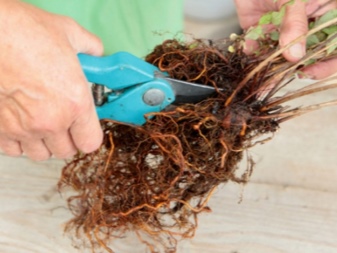
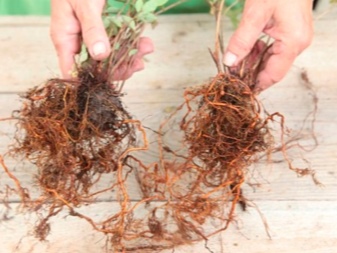
Seeds
Seeds for reproduction of spirea are used extremely rarely, since the plant often loses its varietal qualities.
Most often, this method is used by breeders to get new varieties.
The collection of seeds is carried out in the fall, and then in the winter they are sown in containers with prepared soil. For effective germination, it is recommended to cover the containers with foil or glass and place them in a warm place. Periodically, the film or glass must be lifted for ventilation. With the appearance of sprouts, you will need to moisten them by spraying. Planting seedlings in open ground is carried out in the spring in the usual way.
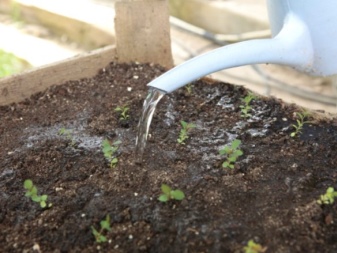
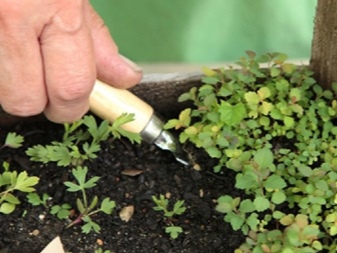
Diseases and pests
The shrub is resistant to various diseases, but some types of pests are dangerous for it. Among the most dangerous is the spider mite. This insect can be seen by the thin cobwebs on the foliage. You can also find out about a pest attack by yellowing and falling leaves.
The spider mite quickly leads to the fact that the shrub is depleted. Therefore, as soon as signs of the presence of the pest are visible, it is necessary to begin to deal with it. For this, insecticides are suitable. Experienced gardeners recommend using "Karbofos" and "Phosphamide", according to the instructions attached to them.


From mid-July it is worth paying attention to the presence of aphids on the bushes. Especially this must be monitored if there are anthills on the site. The pest eats inflorescences, or rather, sucks juicy substances out of them. The insect gnaws holes in the leaves.
To get rid of this pest, you can use a remedy called "Pirimor". From folk methods, you can use a solution of ash or laundry soap, which must first be crushed.

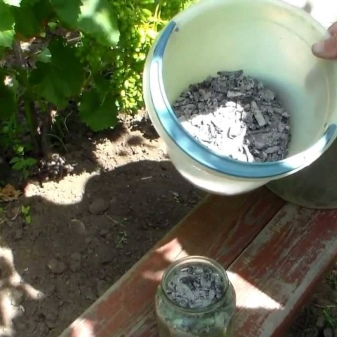
To prevent disease and pest attacks, it is best to carry out prevention using special complex means. You can find them in garden stores.
It is advisable to process the spirea after pruning, in the spring.
Application in landscape design
Spirea "Shirobana" is quite often used in the design of gardens and parks. It is worth noting that Genpei is a good neighbor to many plant species. This allows you to create a large number of decorative groups with the spirea. The main thing is to choose the right shrubs and flowers so that their appearance will please the eye from early spring, all summer and as long as possible in autumn.
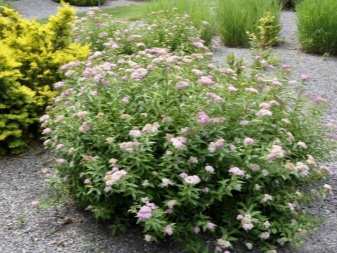
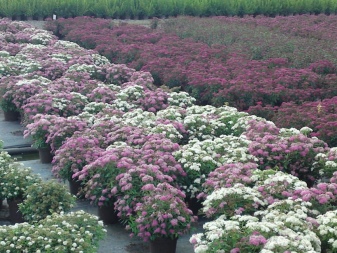
The original composition will turn out if periwinkle, shade saxifrage, cerastium, lungwort are planted in the near-trunk circle of the Japanese spirea.
These plants create a colorful carpet that will accentuate the Japanese shrub from the best sides.

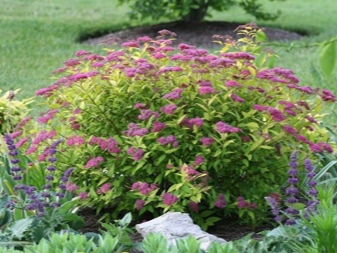
An interesting combination is obtained with bulbous species, especially in the spring. Spirea can be combined with daffodils, tulips. When creating a composition, it is important to remember that flowers should look harmonious in the overall picture.
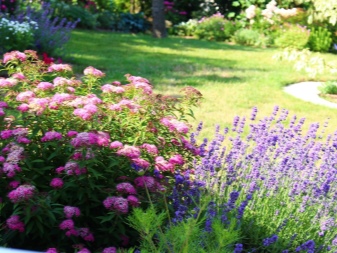

The effectively described plant will look in combination with conifers. Here thuja, juniper, spruce will suit him.
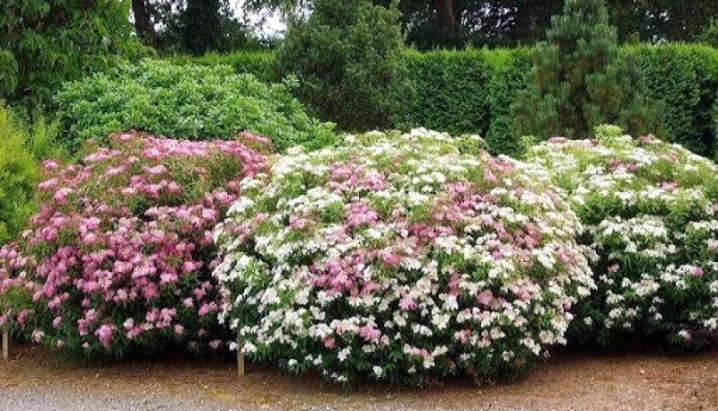
The shrubbery can be used to form a dense hedge, curb or accentuate a slope.

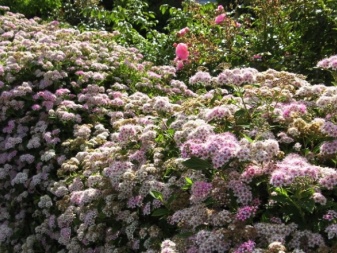
The branches of the plant look great in bouquets. "Genpei", undoubtedly, is able to become an excellent decoration of the site, bringing in a special atmosphere.
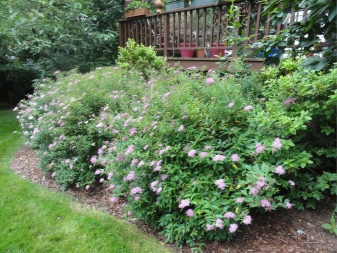
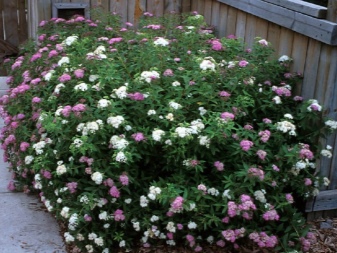
A short overview of the "Shiroban" spirea in the video below.



































































The comment was sent successfully.